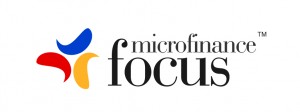The Business Case for Financial Capability
15:30 to 17:00 CST: Financial capability means equipping an individual with both practical skills and access to useful financial products, permitting them to manage their money in a way that both minimizes risk and enhance their socio-economic well-being. Financially capable clients can benefit more from financial services and avoid the dangers of misusing products and services. Likewise, providers could potentially benefit from a more financially capable and responsible client base.
While the majority of previous efforts at enhancing financial capability have been funded by philanthropic organizations, this panel addressed the question: now that the paradigm is shifting from microfinance to financial inclusion, is it time for financial institutions to incorporate financial education into their day-to-day business?
Maneesha Chadha, Head of Corporate Citizenship at Citi South Asia, moderated the panel, and set up the presentation as a lively debate among panelists and audience. Below are some of the issues and conclusions emerging from this conversation:
Manoj Sharma (Director, Microsave) questioned the value of financial capable clients for the banker. After all, the banker is better off if the client does not read the fine print.
Manessha asked, “Whose responsibility should it be to provide financial education?” Anil Kumar replied that it is the provider’s responsibility, but the reason the provider doesn’t want to do it is that most providers don’t want client to know all of what is going on. Thus the cost of educating the client does not increase provider’s bottom line.
Jeff Lieu (PFIP) stated, “The state has a responsibility to educate people to be more responsible with money. Inability to understand find print makes the poor vulnerable. In Fiji we are implementing a bold education reform, integrating financial literacy. Also a case that financial service providers also have responsibility.”
Maneesha then asked Professor Xiangyi Meng: “Does financial education make a difference?”
Meng noted in response the positive impact of financial education on behavior changes. He went on to comment that the financial institution should be responsible for client education. However due to a conflict of interest, “we do not trust them.” Government should also take responsibility. But both of these fail, so NGOs and charity groups step in.
Additionally, we need to measure the long term impact of financial education on markets. In China, financial education would enhance equal opportunity for all citizens. This benefit should be considered irrespective of whether there is change in behavior or not.
When Maneesha posed the question as to what works and what doesn’t when it comes to financial education, Manoj said that he was not an advocate of integration of financial education into the classroom, because most often this knowledge is lost when it’s not used in a practical setting.
The experience of using a product provides good education in itself, as well as interface at points of contact (with the MFI institution, or even with the person guarding an ATM). If a provider has a client base that he wants to grow it makes sense to provide education, so that the client uses the product correctly, because when he benefits from the product he stays with the provider.
The panel agreed that the data so far is compelling: households who have taken financial literacy training own more financial products. A greater percentage of financial literate people have and know how to use a savings account.
However, it’s hard to prove which is the chicken and which is the egg: Is it the financial literacy training or is it the availability of the product – the practical experience – that moves the client from basic financial literacy to being financially capable.
There was a comment in passing that, less than “making a business case” this discussion was really about financial education being part of responsible banking. Sales people should not be the educators, S G Anil Kumar, Trustee at the IFMR Trust said, but rather other representatives of the financial service provider should be the teachers.
Maneesha then challenged the panelists: “Who is going to pay for all of this? And why is it never discussed that financial education mitigates risk?”
Jeff Lieu added his thoughts, “Donors can mediate between the client and the provider. It is our job to find business solutions to fund things that are otherwise left to the social realm but should be part of business as usual. We can subsidize and share the risks of investment in client education.”
Maneesha commented that thus far the panel seemed to agree that “yes there is a business case but it takes tweeks in the approach to make it.” There was also a consensus attitude of financial institutions needs to change.
Following this, an audience member voiced concern about financial education leading to uptake of credit products, which increases risk. Kumar replied by suggesting that microfinance clients tend to understand credit, even when other products confuse to them. Further, credit is not a “push product” and therefore, clients would not be encouraged to take up more credit.
The group then took on the inherent conflict of interest when a commercial bank provides client education:
It goes against the idea that education results in a reduction of client risk if there’s a possibility that a client will be convinced to buy a product he may not need. There is here a fine line between education and sales, especially if commercial banks are involved in education. Another audience member asked how the risk of education becoming sales can be mitigated.
Manoj Sharma replied that this fear is based on the presumption that there is going to be a “mis-selling”. He also reminded the group of the inevitable involvement of the financial institution in education: “Remember that for the upper income client segment, financial education most often is delivered through the financial institution. It will probably play out that this will be the case when it comes to financial education for the poor.”
The panelists finally debated at length whether there is a cost recovery rationale for financial providers in providing the education and training clients need in order to make sound financial decisions and use financial services responsibly. Jeff Liew concluded that “the situation is murky”.
There is an obvious conflict of interest when the salesperson (here the financial institution) is involved in educating the client. Even the concept of responsible product marketing may not be enough. Also the cost of financial education for the poor is considerable, and commercial banks need to be convinced that they will get a return on the education they provide.
With MFIs, as Maneesha pointed out, it has always been part of the program to educate the client, whether it increases the institution’s bottom line or not. But MFIs have been funded by donors, or not for profit business.
Unfortunately, according to Maneesha Chadha, there is no proven model of success for financial education. However, shecontinued, there IS an inherent selfish advantage for a financial institution not to mis-sell, because selling responsibly serves the client. Client education on how to use appropriate products means more business for the bank, and a better outcome for the client.
At the end of the session Bob Annibale, Global Director of Citi Microfinance and Community Development, stopped to talk with Microfinance Focus, and commented that “at the end of the day, it’s all about simplicity and transparency.” He said that it’s very likely that the financial educator WILL be the salesperson. But if you are in a remote village and are asked to buy a product, you have nothing to compare it with. Transparency in practice and simplicity in product design and implementation are what will protect the client.
The session was facilitated by the New York-based Citi Foundation, primary sponsor of AMF 2014, which works to promote economic progress and financial inclusion throughout the world, with the assistance of Citi’s business resources and human capital. Citi commissioned and funded a report called “Bridging the Gap – The Business Case for Financial Capability” which was referenced in this session.
Speakers were Mr. Manoj Sharma, Director of MicroSave, Professor Xiangyi Meng, Assistant Professor of Economics at the School of Public Finance and Policy, Central University of Finance and Economics, China, Mr Jeff Liew, Regional Financial Capacity Advisor at the Pacific Financial Inclusion Programme (PFIP), and Mr. S G Anil Kumar, Trustee at the IFMR Trust.






